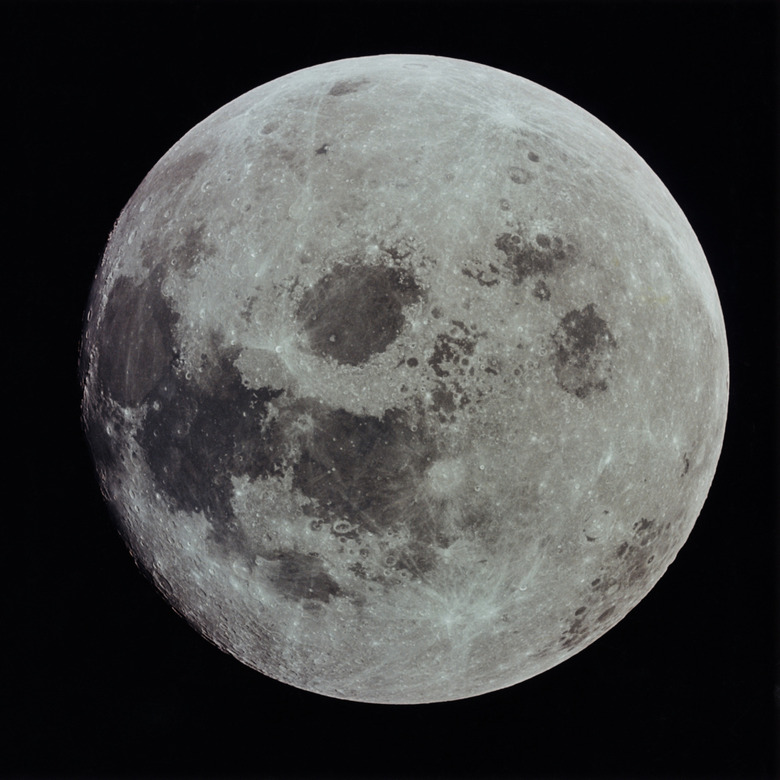Is The Moon Round?
The moon not only regulates the ebb and flow of the tides, but it also moderates the Earth's rotation, helping to create a stable climate. The size, shape and distance of the moon from the Earth all contribute to how the moon affects its nearest neighbor. For centuries, people have debated whether the moon is perfectly round, moderately spheroid or nonspherical. Through observation both from Earth and from various missions to the moon, scientists have been able to determine the satellite's shape.
Shape of the Moon
Shape of the Moon
The moon is a spheroid, not completely round but egg-shaped, according to NASA's Lunar Reconnaissance Orbiter website. The moon's shape derives from its rotation, with the large end of the egg-shape pointing toward the Earth. Not only does the moon have an irregular shape, but its center of mass is irregular as well — it's approximately 2 kilometers (1.2 miles) out from the geometric center of the moon.
Observational Evidence
Observational Evidence
Scientists know that the moon is a spheroid because solar eclipses are always circular, meaning that the moon must be a shape that yields a relatively circular shadow. The boundary between the day and night sides of the moon, as seen from Earth, is an arc — another shape that can only occur for a spheroid object.
Scientific Evidence
Scientific Evidence
Missions to the moon, such as the Apollo, Clementine, Zond and Lunar Prospector, have provided evidence for a spheroid moon. These missions studied the topography of the moon, providing images both from orbit and from the moon's surface. The pictures from these missions showed that the moon appears to be a disk from any angle at which you examine it — a characteristic that is only possible for an egg-shaped object.
Common Misconception
Common Misconception
Many people mistakenly believe that the moon is a sphere because the a full moon appears to be a perfect circle. When you see the moon, however, you are only seeing the small portion of the moon that is illuminated by the sun. The appearance of the moon's face depends on the position of the moon in relationship to the sun, leading to the different phases of the moon that are visible to people on Earth.
Cite This Article
MLA
Hochlowski, Natasha. "Is The Moon Round?" sciencing.com, https://www.sciencing.com/moon-round-20233/. 24 April 2017.
APA
Hochlowski, Natasha. (2017, April 24). Is The Moon Round?. sciencing.com. Retrieved from https://www.sciencing.com/moon-round-20233/
Chicago
Hochlowski, Natasha. Is The Moon Round? last modified March 24, 2022. https://www.sciencing.com/moon-round-20233/
